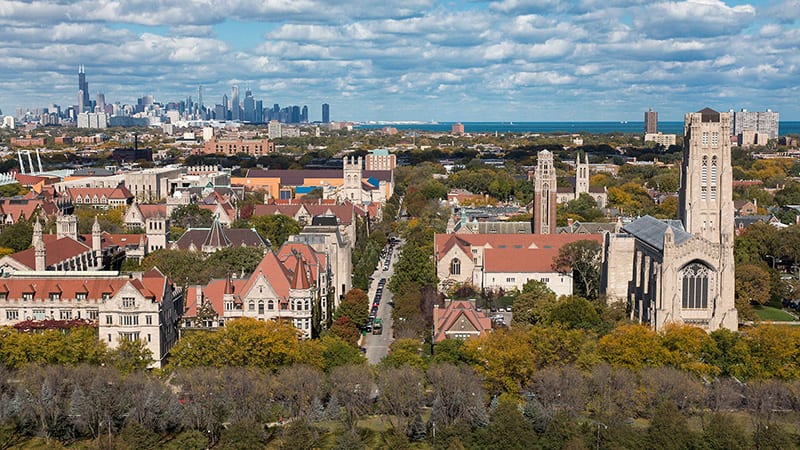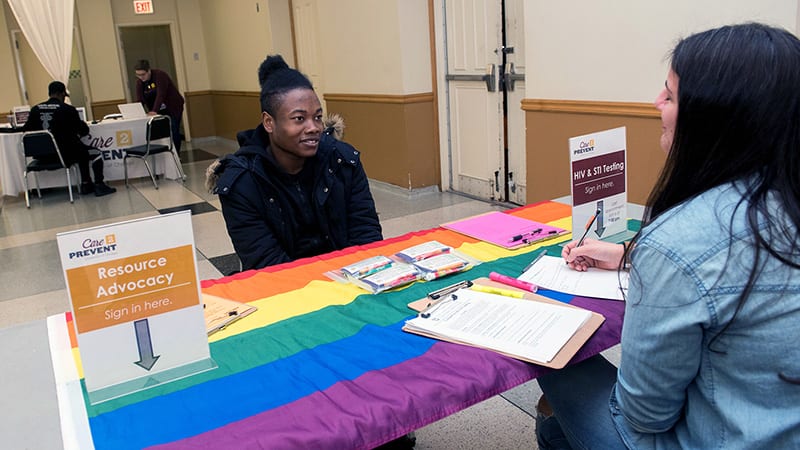History
HIV at the University of Chicago
Prior to 2000, there was a history at the University of Chicago, and in particular within the biomedical complex, of looking beyond one of the most significant medical challenges of the century. We were probably one of the only major urban academic health institutions in the United States to do so, and in many ways this legacy has made our current efforts even more pronounced, focused and driven. The University of Chicago is at the forefront of healing complex conditions which makes our current “one campus” approach distinct, and advances the natural and deep interdisciplinary approaches that CCHE embodies.

The University of Chicago
The Biological Sciences Division and in particular the Departments of Medicine, Pediatrics, Obstetrics/Gynecology and Health Studies have made considerable progress towards HIV transmission elimination. These units and the Harris School, the Booth School, the School of Social Services Administration, and the College are reciprocally strengthened by efforts to limit new HIV transmission domestically and internationally.
High quality HIV prevention and treatment clinical services for newly HIV diagnosed and at-risk adolescents and adults are available even for those without insurance through one of several CCHE HIV providers. A very important part of our growth and development has included the establishment of a comprehensive HIV program that has rapidly expanded 10 fold over a ten year period to meet the needs of multiple populations in Chicago.
The HIV Epidemic in Chicago
The history of HIV/AIDS in Chicago, mirroring other major cities, is in many ways a representative microcosm of the national epidemic. In the early 80s the epidemic was widely considered a disease of (mostly white) gay men and injection drug users. Today, the predominantly white LGBTQ neighborhoods of LakeView and Uptown still have the highest prevalence of HIV in the city where many social services are available. However, the rate of new infection is increasing fastest in young black men who have sex with men and black women. Young black MSM in Chicago are more likely than white MSM to become infected with HIV, with no differences in risk behavior or partner number.

Christopher Titus talks to Aziza Carter, November 21, 2017 at Washington Park
as part of the Care 2 Prevent program. (Photo by Jean Lachat)
Get Tested
When was the last time you had an HIV or STI test? We can help you find somewhere to get tested.